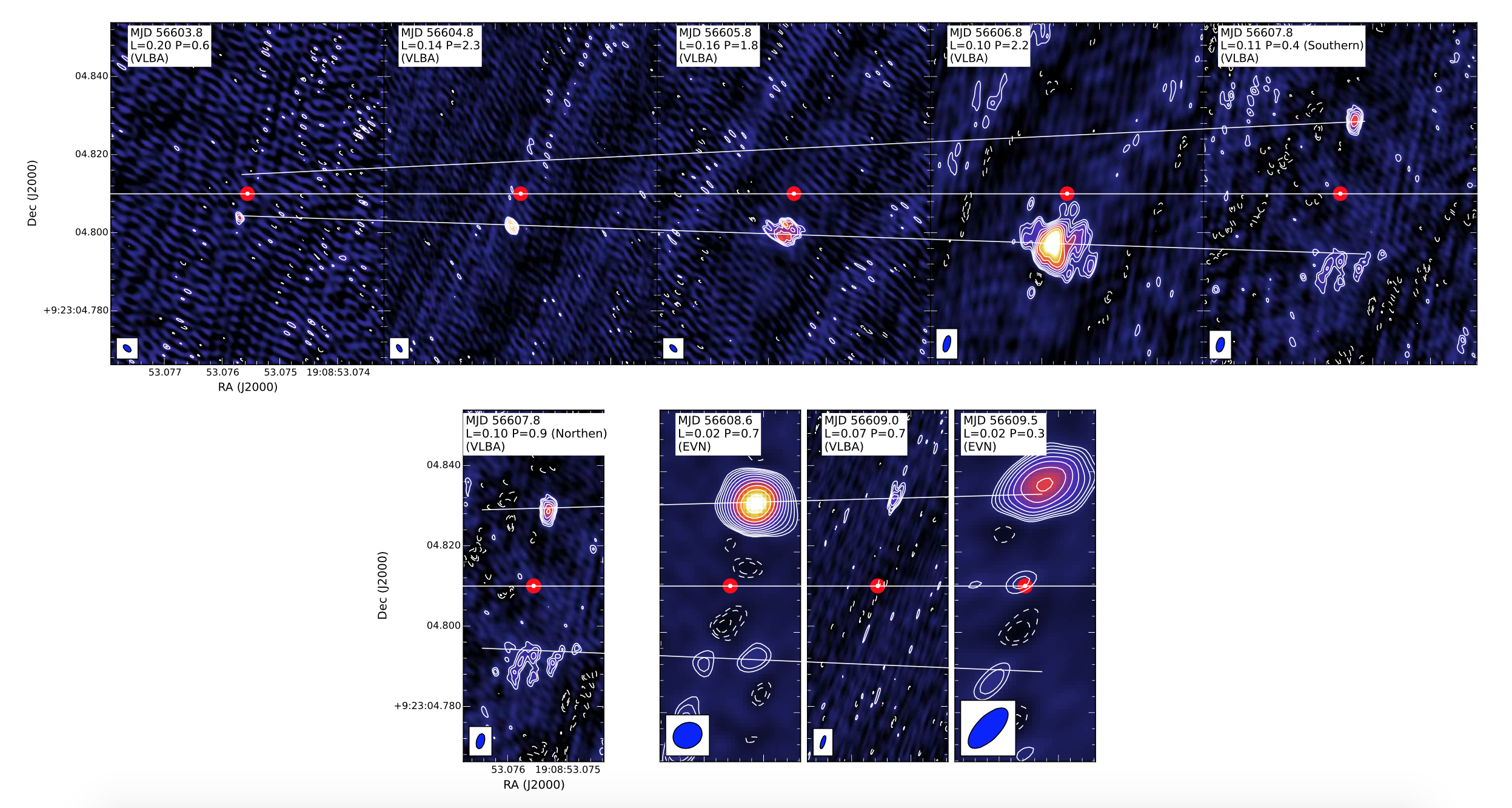Daily Image
14-03-2017Black Hole X-ray Binary XTE J1908+094 shows spectacular outburst
| Submitter: | Zsolt Paragi |
| Description: | Black hole X-ray binaries undergo occasional outbursts caused by changing inner accretion flows. These outbursts are often accompanied by collimated ejecta at near relativistic speeds, similar to what we see in the nuclei of active galaxies, therefore these systems are sometimes referred to as microquasars. The microquasar XTE J1908+094 produced a bright radio flare in 2013. Very high angular resolution observations with the Very Long Baseline Array (VLBA) and the European VLBI Network (EVN) detected moving jet knots that appear asymmetric in morphology and brightness, and expand to become laterally resolved as they move away from the binary. Initially, the southern component gives rise to a 15-mJy radio flare and generates the observed radio polarization. This fades and becomes resolved out after 4 days, after which a second component appears to the north, moving in the opposite direction. The timing of the appearance of the knots relative to the X-ray state transition, a 90 degrees swing of the inferred magnetic field orientation, the asymmetric appearance of the knots, their complex and evolving morphology, and their low speeds, indicates that the knots are working surfaces where the jets impact the surrounding medium. This would imply a substantially denser environment surrounding XTE J1908+094 than has been inferred to exist around other microquasars. The results will be published by Anthony Rushton et al. in the Monthly Notices of the Royal Astronomical Society (arXiv preprint: https://arxiv.org/abs/1703.02110 ). |
| Copyright: | Anthony Rushton et al. |
| Tweet |  |
